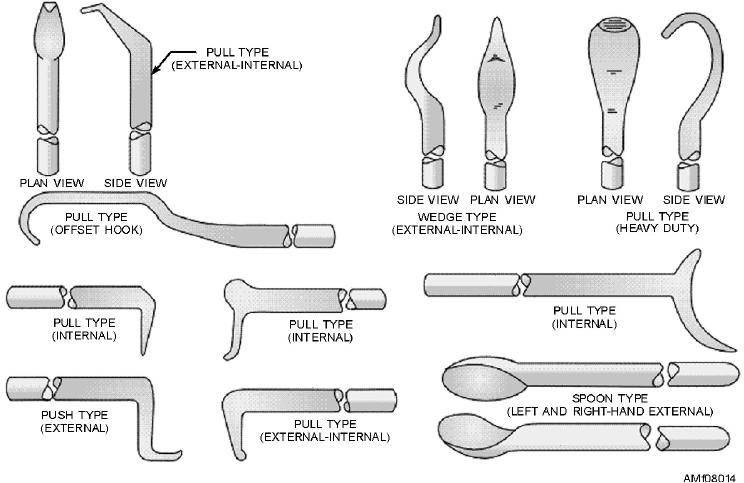
When hydraulic seals are chosen for installation, they
O-rings should be kept in their original envelopes,
should not be picked up with sharp instruments, and the
which provide preservation, protection, identification,
preservative should not be removed until they are ready
and cure date. Contamination is caused by piercing the
for installation.
sealed envelopes to store O-rings on rods, nails, or wire
hanging devices. Contamination may be caused by
During the installation or removal of hydraulic
fluids leaking from parts stored above and adjacent to
seals, as well as other tasks, your best friend is the
O-ring surfaces. Contamination can also be caused by
correct tool. A variety of these tools may be used on any
adhesive tapes applied directly to O-ring surfaces. A
given job. Suggestions for fabricating typical tools for
torn O-ring package should be secured with a
use in replacing and installing O-rings and backup rings
pressure-sensitive, moistureproof tape, but the tape
are shown in figure 8-14. These tools should be
must not contact the O-ring surfaces. O-rings should be
fabricated from soft metal such as brass and aluminum;
arranged so the older seals are used first.
however, tools made from phenolic rods, plastics, and
woods may also be used.
Removal and Installation
When removing or installing O-rings, avoid using
The successful operation of a hydraulic system and
pointed or sharp-edged tools that might cause
the units within depends greatly upon the methods and
scratching or marring of hydraulic component surfaces
procedures used in handling and installing hydraulic
or cause damage to the O-rings. While using the seal
seals. These seals are comparatively soft and should not
removal and the installation tools, contact with cylinder
be subjected to any nicks, scratches, or dents. They
walls, piston heads, and related precision components
should be kept free of dirt and foreign matter and
is not desirable. With practice, you should become
should not be exposed to extreme weather conditions.
proficient in using these tools.
Figure 8-14.--Typical O-ring installation and removal tools.
8-25

